Life and work
His father was a primary school teacher. From 1879 to 1883, he studied architecture at the Technical University of Munich with Friedrich von Thiersch and Paul Wallot. He would spend most of his career in Munich and often worked in collaboration with Günther Blumentritt [ de ]. From 1884 to 1887, he also collaborated with the architectural firm of Arwed Roßbach, in Leipzig. From 1887 to 1891, he assisted Paul Wallot during the construction of the Reichstag building in Berlin. In 1890, he entered a competition to design the National Kaiser Wilhelm Monument.
From 1891 to 1892, he served as an assistant Professor for freehand drawing at the Technical University, and from 1893 was a Privatdozent for sketching from nature. From 1900 to 1908 he was "professor without chair" for drawing, decorative architecture and perspective. In 1908, he became a full professor.
His most familiar buildings include the Shooting Range of the HSG Munich [ de ] (1892-1894) in Sendling-Westpark, the headquarters of the French Consulate General in Bogenhausen (1896-1897) and the east wing of the Palace of Justice, Nuremberg (1909-1916).

The Technical University of Berlin is a public research university located in Berlin, Germany. It was the first German university to adopt the name "Technische Universität".

The Technical University of Munich is a public research university in Munich, Germany. It specializes in engineering, technology, medicine, and applied and natural sciences.

The Academy of Fine Arts, Munich is one of the oldest and most significant art academies in Germany. It is located in the Maxvorstadt district of Munich, in Bavaria, Germany.
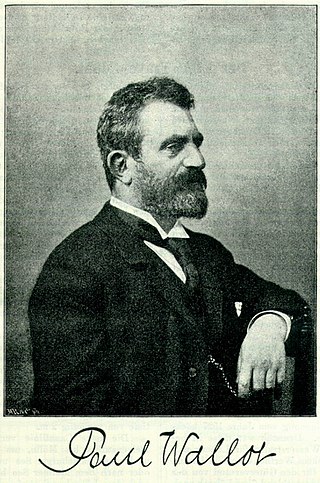
Johann Paul Wallot was a German architect of Huguenot descent, best known for designing the Reichstag building in Berlin, erected between 1884 and 1894. He also built the adjacent Palace of the President of the Reichstag, finished in 1904, and the former Saxon Ständehaus state diet building of 1906 at Brühl's Terrace in Dresden.
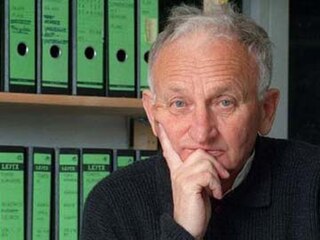
Günter Behnisch was a German architect, born in Lockwitz, near Dresden. During the Second World War he became one of Germany's youngest submarine commanders. Subsequently, Behnisch became one of the most prominent architects representing deconstructivism. His prominent projects included the Olympic Park in Munich and the new West German parliament in Bonn.

The Gottfried Wilhelm Leibniz Prize, or Leibniz Prize, is awarded by the German Research Foundation to "exceptional scientists and academics for their outstanding achievements in the field of research". Since 1986, up to ten prizes have been awarded annually to individuals or research groups working at a research institution in Germany or at a German research institution abroad. It is considered the most important research award in Germany.

Akaflieg is an abbreviation for Akademische Fliegergruppe, groups of aeronautical engineering students from individual German Technical Universities, pre and postwar, who design aircraft, often gliders.
Dr. Udo Weilacher is a German landscape architect, author and Professor for Landscape Architecture.
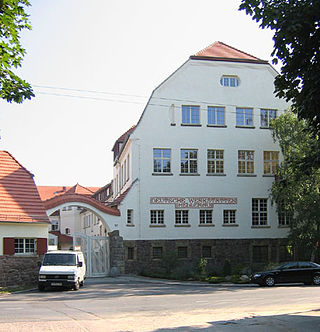
Richard Riemerschmid was a German architect, painter, designer and city planner from Munich. He was a major figure in Jugendstil, the German form of Art Nouveau, and a founder of architecture in the style. A founder member of both the Vereinigte Werkstätte für Kunst im Handwerk and the Deutscher Werkbund and the director of art and design institutions in Munich and Cologne, he prized craftsmanship but also pioneered machine production of artistically designed objects.
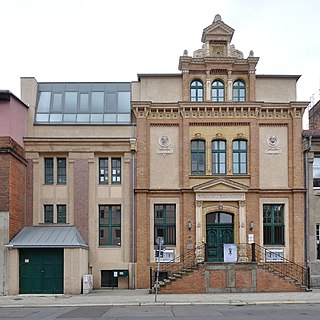
A Kunstgewerbeschule was a type of vocational arts school that existed in German-speaking countries from the mid-19th century. The term Werkkunstschule was also used for these schools. From the 1920s and after World War II, most of them either merged into universities or closed, although some continued until the 1970s.
Thomas Herzog is a German architect from Munich known for his focus on climate and energy use through the use of technologically advanced architectural skins. He began with an interest in pneumatics and became Germany's youngest architecture professor at the age of 32. He established his firm Herzog + Partner in 1983.
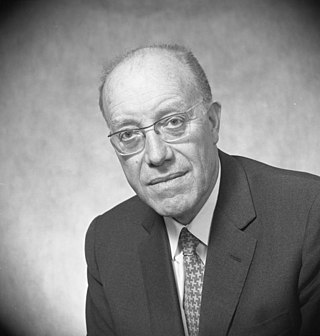
Heinz Maier-Leibnitz was a German physicist. He made contributions to nuclear spectroscopy, coincidence measurement techniques, radioactive tracers for biochemistry and medicine, and neutron optics. He was an influential educator and an advisor to the Federal Republic of Germany on nuclear programs.

Sep Ruf was a German architect and designer strongly associated with the Bauhaus group. He was one of the representatives of modern architecture in Germany after World War II. His elegant buildings received high credits in Germany and Europe and his German pavilion of the Expo 58 in Brussels, built together with Egon Eiermann, achieved worldwide recognition. He attended the Interbau 1957 in Berlin-Hansaviertel and was one of the three architects who had the top secret order to create the governmental buildings in the new capital city of the Federal Republic of Germany, Bonn. His best known building was the residence for the Federal Chancellor of the Federal Republic of Germany, built for Ludwig Erhard, the so-called Chancellor's Bungalow.
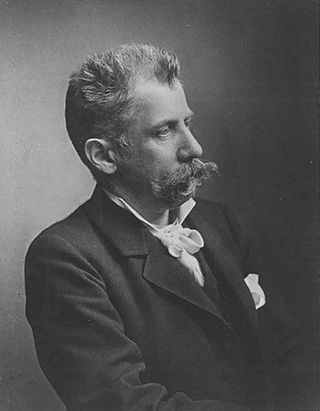
Gabriel von Seidl was a German architect and a representative of the historicist style of architecture.

Emmanouil Korres is a major Greek restoration architect, civil engineer and professor of architectural history at postgraduate studies at the National Technical University of Athens. Currently he is head of the Acropolis Restoration Service (YSMA) and a casual member of the Academy of Athens since 2017.

The TUM School of Engineering and Design is a school of the Technical University of Munich, established in 2021 by the merger of four departments. As of 2022, it is structured into the Department of Aerospace & Geodesy, the Department of Architecture, the Department of Civil & Environmental Engineering, the Department of Energy & Process Engineering, the Department of Engineering Physics & Computation, the Department of Materials Engineering, the Department of Mechanical Engineering, and the Department of Mobility Systems Engineering.

Friedrich Maximilian Thiersch, after 1897 Ritter von Thiersch, was a German architect and painter in the late Historicist style.

Volker Staab is a German architect.
Erwin Schleich was a German architect, architectural conservator, and architectural historian known for his post-war reconstruction of buildings and monuments in Munich.

















